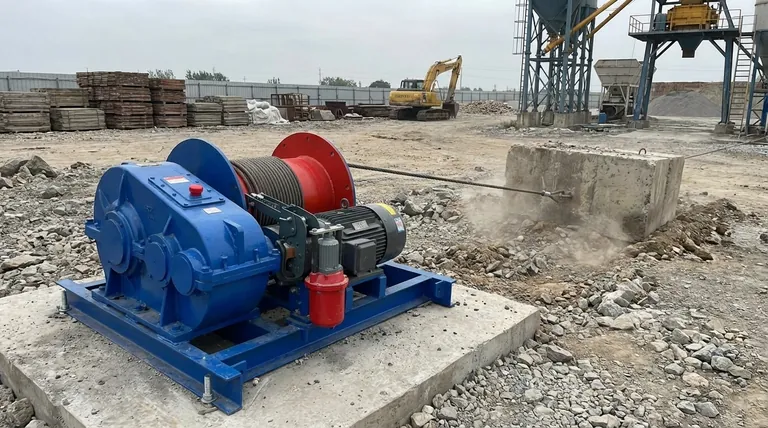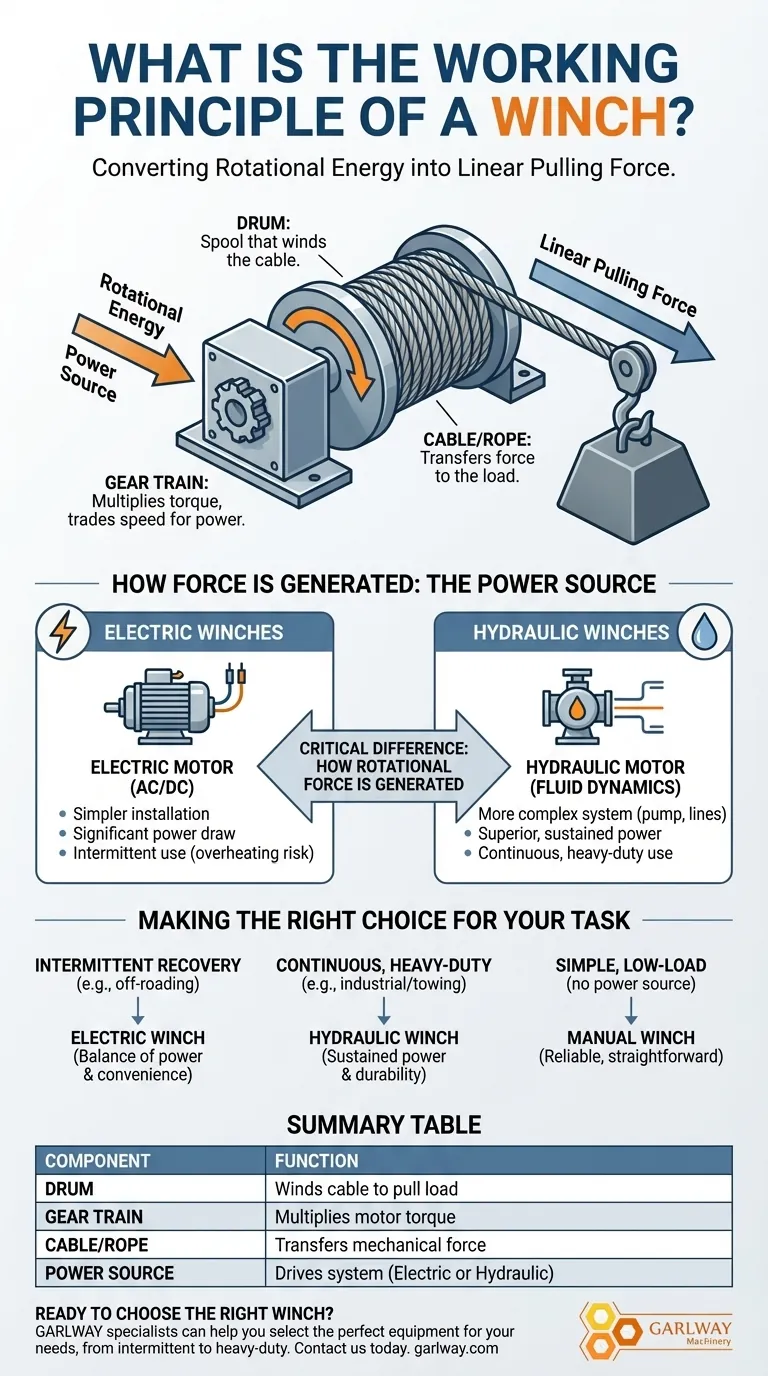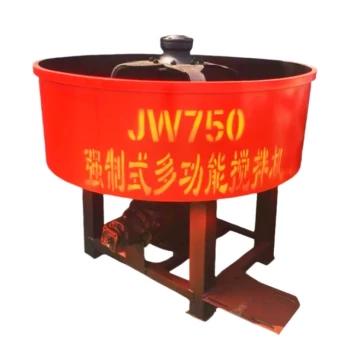At its core, a winch works by converting rotational energy into linear pulling force. It uses a power source to turn a cylindrical drum, which winds a cable or rope around itself. As the cable is wound onto the drum, it pulls an attached load in a straight line, either horizontally or vertically.
The fundamental principle is always the same: rotate a drum to wind a cable and pull a load. The critical difference between winch types lies in how that rotational force is generated, which dictates the winch's power, duty cycle, and ideal application.

The Core Mechanical Principle
Regardless of the power source, every winch operates using a few key mechanical components that work in unison.
The Central Component: The Drum
The drum is the spool at the heart of the winch. As it rotates, it neatly winds (or unwinds) the cable, acting as the direct mechanism for pulling the load.
The Power Train: From Motor to Drum
A gear train connects the power source (like a motor) to the drum. This system multiplies the torque generated by the motor, trading speed for immense pulling power, allowing a small motor to move a very heavy object.
The Working End: The Cable or Rope
The cable or wire rope is the component that transfers the winch's mechanical force to the load. One end is securely attached to the drum, and the other end is fitted with a hook to attach to the object being moved.
How Force is Generated: The Power Source
The primary differentiator between winches is the method used to generate the power needed to turn the drum.
Electric Winches
Electric winches use an electric motor to drive the gear train. The operator uses controls to send electricity from a power source to the motor, causing it to rotate and engage the drum.
These motors can run on Direct Current (DC), typically from a vehicle's battery or alternator, or Alternating Current (AC) from a standard power outlet.
Hydraulic Winches
A hydraulic winch operates on the principle of fluid dynamics. It uses a hydraulic motor powered by highly pressurized fluid, usually oil.
A separate hydraulic pump pressurizes the fluid, which is then directed into the motor. This fluid pressure drives the motor, which in turn rotates the drum with significant and sustained force.
Understanding the Trade-offs
The choice between the primary power sources—electric and hydraulic—is not just about preference; it's about understanding fundamental differences in performance and application.
Electric Winch Considerations
Electric winches are often simpler to install, especially on vehicles. However, they draw significant power, which can drain a battery quickly, and are often designed for intermittent use to prevent the motor from overheating.
Hydraulic Winch Considerations
Hydraulic systems are more complex, requiring a pump, fluid reservoir, and lines. In exchange, they offer superior power and can run continuously without overheating, making them the standard for heavy-duty industrial and commercial applications.
Making the Right Choice for Your Task
Selecting the correct winch requires matching its power principle to the job at hand.
- If your primary focus is intermittent recovery or occasional pulling (like off-roading): An electric winch provides the best balance of power, convenience, and ease of installation.
- If your primary focus is continuous, heavy-duty operation (like in industrial or towing applications): A hydraulic winch is the necessary choice for its sustained power and durability.
- If your primary focus is simple, low-load tasks with no available power source: A manual, hand-cranked winch remains a reliable and straightforward option.
Ultimately, understanding how a winch generates force is the key to selecting the right tool for the work you need to accomplish.
Summary Table:
| Component | Function |
|---|---|
| Drum | The spool that winds the cable to pull the load. |
| Gear Train | Multiplies motor torque for greater pulling power. |
| Cable/Rope | Transfers the mechanical force from the winch to the load. |
| Power Source | Drives the system (Electric Motor or Hydraulic Motor). |
Ready to Choose the Right Winch for Your Project?
Understanding the working principle is the first step. GARLWAY, a specialist in construction machinery, can help you select the perfect winch for your specific needs, whether it's for intermittent recovery or heavy-duty industrial use.
We offer a range of high-quality winches, concrete mixers, and concrete batching plants designed for durability and performance, trusted by construction companies and contractors globally.
Let our experts help you get the job done right. Contact GARLWAY today for a consultation and discover the right equipment solution for your business!
Visual Guide

Related Products
- Electric and Hydraulic Winch for Heavy Duty Applications
- Warn Winch Windlass Boat Trailer Winch
- Electric 120V Boat Winch by Badlands
- Best 18000 Pound Drum Anchor Trailer Winch
- 12000 lb Heavy Duty Electric Boat Winch
People Also Ask
- Do electric winches have brakes? Essential Safety for Your Heavy-Duty Pulling
- How to power an electric winch on a trailer? Choose the Best Method for Your Setup
- How is an electric winch powered? Unlock the Power Conversion System for Heavy Lifting
- Can an electric winch be used as a hoist? Understand the Critical Safety Differences
- Can you use an electric winch manually? A Guide to Dual-Functionality Winches



















